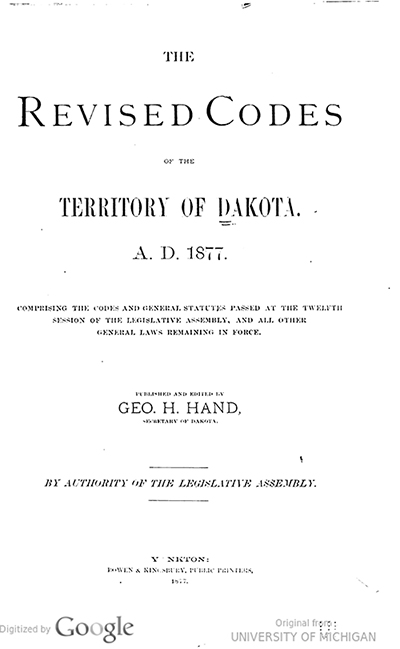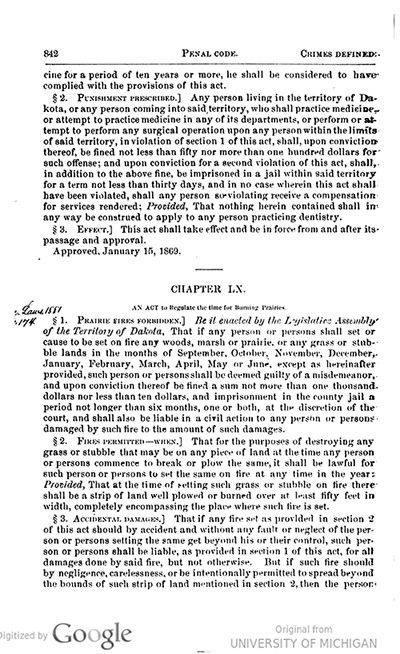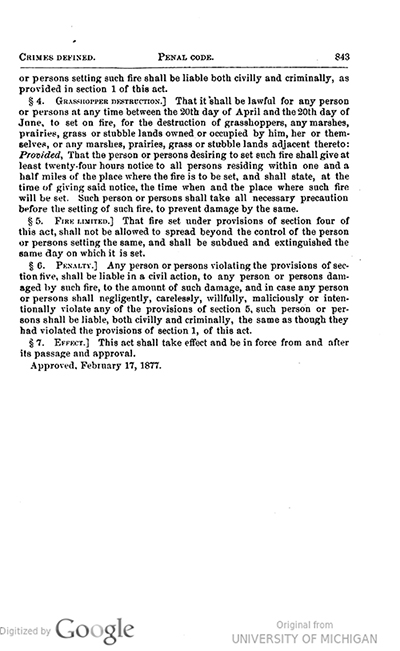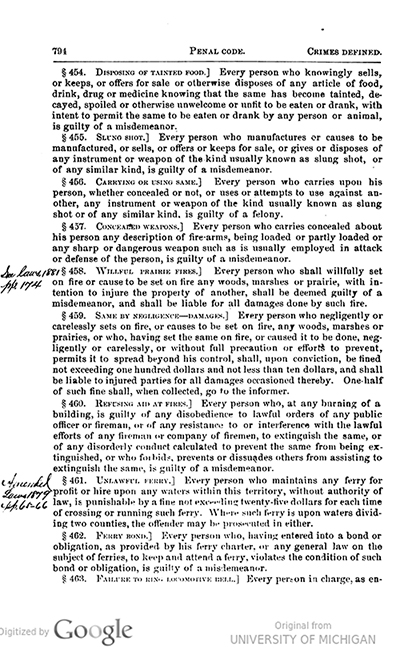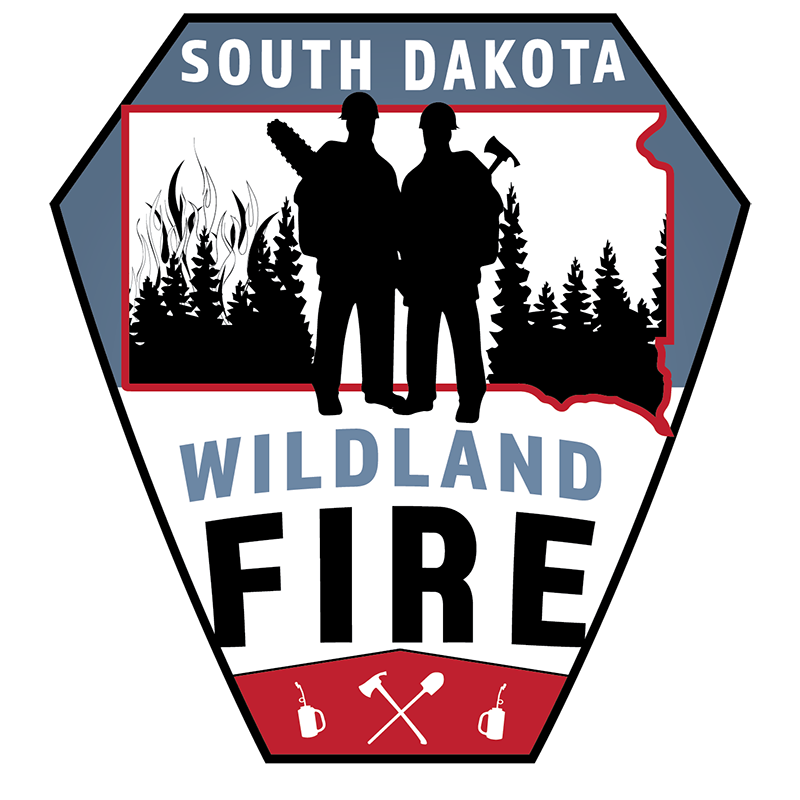
History
The prairie and forested ecosystems that consist of the geographical area that is now known as South Dakota has historically seen frequent occurrence of wildfire in both grass and timber fuel models. See historic fire frequency.
Using easily accessed research tools on any internet search browser will lead any interested researcher or historian to a plethora of information on large wildland fires that have burned throughout the historical record of settlement in the northern Great Plains. In addition, excellent tree ring research has been done to document fire occurrence, extent and severity before recorded settlement activities. Using the US Forest Service "Treesearch" internet search engine, will lead to further information on fire return intervals, fire history and wildfire's role in the ecosystem management in this region. Therefore, the following is not a complete history of large wildfire activity in the state of South Dakota, but just a brief summary of historical events leading to the present day situation.
In 1889 South Dakota joined the United States as the 40th state but before the creation of the state, territorial legislation was at work to protect South Dakota's forested and range lands from the threat of wildland fire. In the first session of the Territorial Legislature in Yankton in 1862, a law was passed to prevent wildfires from starting from agricultural operations or land clearing, and that law still exists today in the South Dakota Codified Law (SDCL).
In April of 1889, the year of statehood, massive prairie fires burned an estimated 500,000 to 1,000,000 acres over two day period east of the Missouri River in both of the present day states of North and South Dakota. The summer of 1893 saw several large forest fires in the Black Hills threatened communities and mining camps. Then in 1897 the Black Hills Forest Reserve was established by President Cleveland by withdrawing 42 townships from the public domain. While at this same time, farmers in eastern part of the state worked through their legislators to pass laws forcing townships to create and maintain fire guards in their townships and forced railroads to maintain fireguards along their railroad right-of-ways. A "fire guard" in this sense is not a person but rather a long strip of soil tilled and ploughed over to bare mineral soil or burned in black line, usually along a township trail or road, that would prevent the forward spread of fire in light grass fuels.
In 1912 Custer State Forest came to be on 60,145 acres by the consolidation of the School and Public Lands sections in the Black Hills National Forest and in Harding County. Then in 1919 it was turned in to Custer State Park as it still is today. Located in Custer State Park is Mount Coolidge lookout tower. Clarence Mann was the first lookout to live in the tower starting in 1941. He was later appointed Forest Supervisor for the State of South Dakota.
The decade of the 1930's saw periods of extended drought throughout the region and large fires burned in the central and northern Black Hills and across the state line in Wyoming during that time. The McVey fire of 1939 almost burned down the town of Hill City and raised awareness of the need for stricter prevention regulations on the use of fire.
By 1941 the Black Hills Forest Fire Protection District was established by state law "to protect the timber on area subject to unusual fire dangers" and controlled the use of open fire in the district on a permit basis and it provided for both federal and state officials to permit the use of open fire on each other's respective lands. It also provided a more standard permit system across the Black Hills given at that time there were two National Forests in the District, (Black Hills and Harney National Forests.) A history of the Black Hills Forest Fire Protection District.
In 1945 the South Dakota Division of Forestry was established and made a part of the Game, Fish and Parks Department. Under the direction of the State Forester, the Division of Forestry was responsible for Tree Distribution, Timber Management, Law Enforcement, Park Development and Fire Protection across the State. In September of 1947, three prairie fires burned together on a hot dry windy afternoon and scorched an estimated 250,000 acres in Potter, Hyde, Hand and Hughes Counties in central South Dakota in one day. Events such as the Highmore fire and the large Tilford fire by Piedmont in 1949 helped rally support for more fire prevention and conservation measures and to that end, a non-profit group called "Keep South Dakota Green" advocated for that message on a state wide basis. The Keep South Dakota Green organization was led by such volunteers as E. L. "Paddy" Ingvalson who as editor of the Rapid City Journal, could provide considerable influence and support to increased wildfire control activities in the Black Hills and across the state. This political support allowed Game Fish and Parks Secretary and former State Forester Harry R. Woodward Jr to establish the first framework of field operations for state fire suppression forces on a year-round basis, and laid the groundwork for future expansion of field offices and state suppression forces into the future.
In September 1959, the Deadwood fire which almost burned down the City of Deadwood, and caused severe damage within the city itself, was determined to be caused by the improper use of a burn barrel. This in turn led to strengthening more state laws with regards to fire prevention in the Black Hills Forest Fire Protection District. The Deadwood fire also saw the first time extensive use of heavy air tankers and helicopters in fire operations in South Dakota.
During the 1960's and 70's, the State Division of Forestry fire foresters worked hard to augment their meager state resources with local volunteer fire departments, the local timber industry, Homestake Mining Company and the US Forest Service and National Park Service resources to support an interagency effort in preventing and controlling wildfires in the Black Hills area. At the same time, local ranchers and small town fire departments in Butte, Harding, Perkins and Meade counties worked hard in controlling large forest and prairie fires in the northwestern part of the state without much assistance from the state of South Dakota.
The drought year of 1974 was a big forest fire across the nation and in the Black Hills. The Division of Forestry was taxed to its limits along with the Black Hills National Forest in controlling fires in Custer and Fall River County. (See Argyle Fire Chronology) During the 1970's, research and field application of controlled fire in the Black Hills Ponderosa Pine ecosystem was carried out through efforts of the South Dakota State University West River Experiment Station and Dr. Robert Gartner while at the same time, staff an Wind Cave National Park were intentionally setting fires for research work within the park boundaries. Later in that decade, SD Game, Fish and Parks through its Custer State Park Division were starting a prescribed burn program in the State Park.
In 1984, the Division of Forestry and the State Forester's office was transferred from Game, Fish and Parks to the Department of Agriculture. During that time, statutory authority was granted to the State Forester to plan and implement controlled burns. The agency worked through many large fires campaigns in the 1980's and 1990's. In 2000, the Jasper wildfire occurred west of Custer. It was the largest wildfire to date in the Black Hills since time of settlement. That next year, a new state agency was created called the Division of Wildland Fire Suppression, and authority for forest fire control actions and other fire management activities was transferred from the State Forester to the Division of Wildland Fire and the Secretary of Agriculture. The new Division was established on July 1, 2001 and since then has managed many large wildland fires in the state, created a Handcrew and urban interface fuels program along with supporting a national Incident Management Team. The Division works closely with its federal agency partners, volunteer and municipal fire departments, Great Plains Compact member states, provinces, and the general public in partnerships to deliver fire management services both inside and outside of the state.
On January 19, 2021, Governor Kristi Noem signed Executive Order 2021-03 which combined the Department of Agriculture and Department of Environment and Natural Resources as the Department of Agriculture and Natural Resources. During this reorganization, South Dakota Wildland Fire (SDWF) was reassigned to the Department of Public Safety (DPS). The reorganization was approved during the 96th legislative session and became effective April 19, 2021. Within DPS, SDWF is assigned to the Division of Emergency Services which also includes the Office of Emergency Management, the State Fire Marshal's Office, and the State 911 Coordinator.





